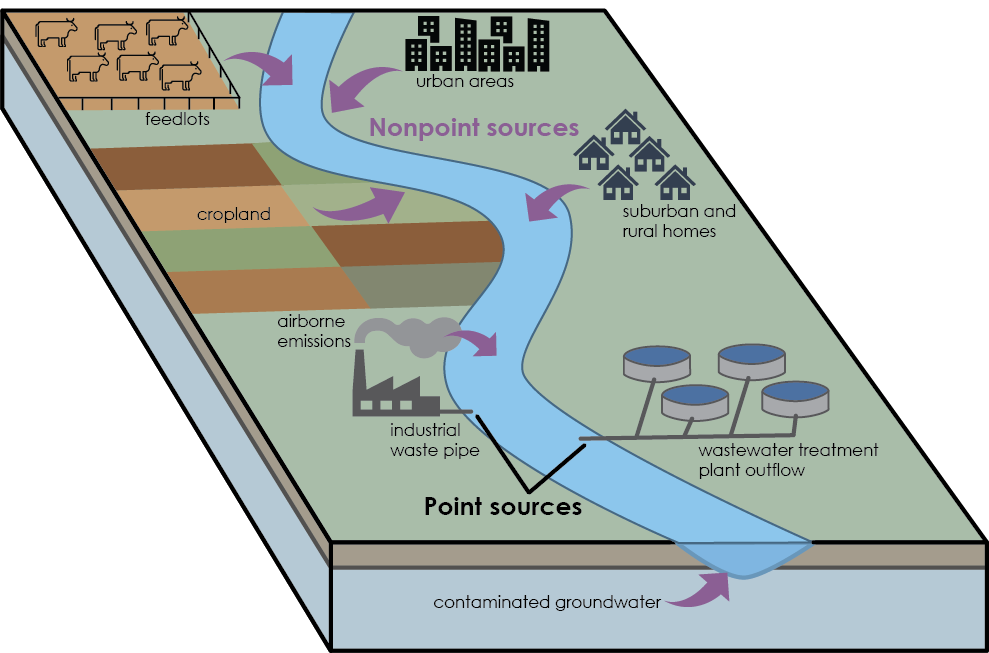3. Water Quality Regulations
Sources of water pollution are categorized as either point source pollution or nonpoint source (NPS) pollution. Point source pollution is any contaminant that can be traced to a single, easily identifiable source. This includes outflow from sewage treatment plants, waste pipes from manufacturing facilities, or an oil spill from a tanker ship. Nonpoint source pollution on the other hand, comes from many sources over a broad area that get mixed together (Figure 2C.3.1). Examples of NPS pollution include: water running over city streets and collecting garbage, dirt, oil leaked from cars, and other chemicals before entering the storm sewer and then discharging into a river; runoff from agricultural fields that has picked up soil, nutrients, and fertilizers; and groundwater that has been contaminated and then flows into a lake or river.

The Federal Water Pollution Control Act of 1948 was the first act demonstrating U.S. federal government attention to clean water. It established funds for state and local governments to assist them in addressing water pollution issues. At the time, water pollution was seen as a more local, not federal issue, so this act did not set any federal goals or guidelines for how water pollution should be handled. The federal government did not enforce any contamination limits unless the pollution was in interstate waters (i.e., rivers that cross over state boundaries).
Over the next few decades, public awareness and concern over water pollution grew, leading to major revisions of the Federal Water Pollution Control Act culminating in the Clean Water Act of 1972, which with the addition of some newer amendments, is the water regulation in place today. The Clean Water Act (CWA) created a basic structure for regulating the discharge of pollution into U.S. water and gave the Environmental Protection Agency the authority to implement and enforce pollution control programs and water quality standards in all waters, not just interstate waters. The CWA made it illegal to discharge a pollutant from a point source into navigable waters unless a permit was obtained. The CWA greatly reduced the amount of pollution entering U.S. water from point sources.
The one drawback of the CWA at the time was it very clearly established regulations and requirements for point source pollution but did not address nonpoint source pollution. It is estimated that 40% of all impaired waters in the U.S. are affected only by nonpoint source pollution, while only 10% are affected by only point source pollution. The remaining 50% are affected by a combination of pollution sources.
A 1987 amendment to the CWA was created to address the need for more leadership concerning efforts to reduce NPS pollution. It did not set regulations or limits on NPS pollution, as the diffuse nature of this pollution makes identification and enforcement difficult, but it established a program for states, territories, and tribes to receive grant money for establishing and monitoring NPS pollution mitigation projects.
Check your understanding: Pollution sources and water quality regulations
References
U.S. Environmental Protection Agency, (n.d.). Introduction to the Clean Water Act: Section 319: Nonpoint Source Program. https://cfpub.epa.gov/watertrain/moduleFrame.cfm?parent_object_id=2165
